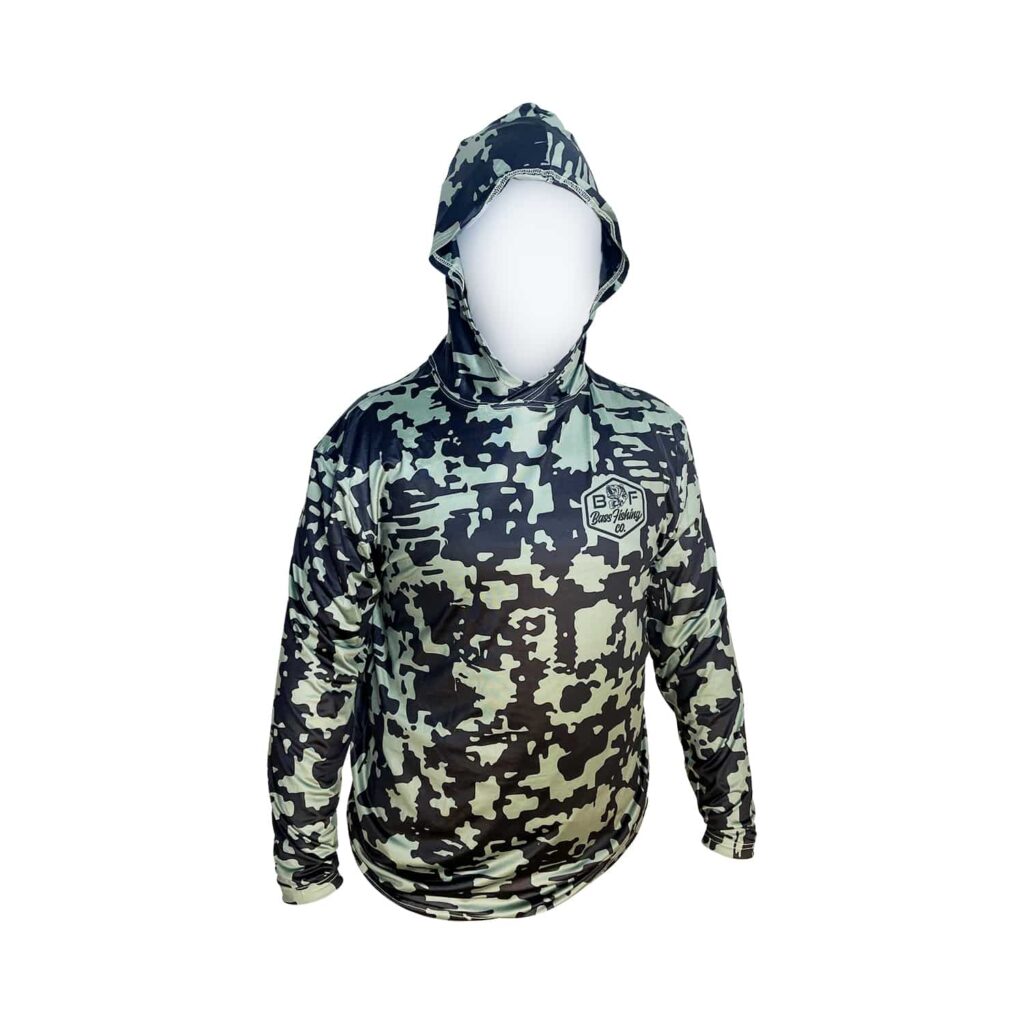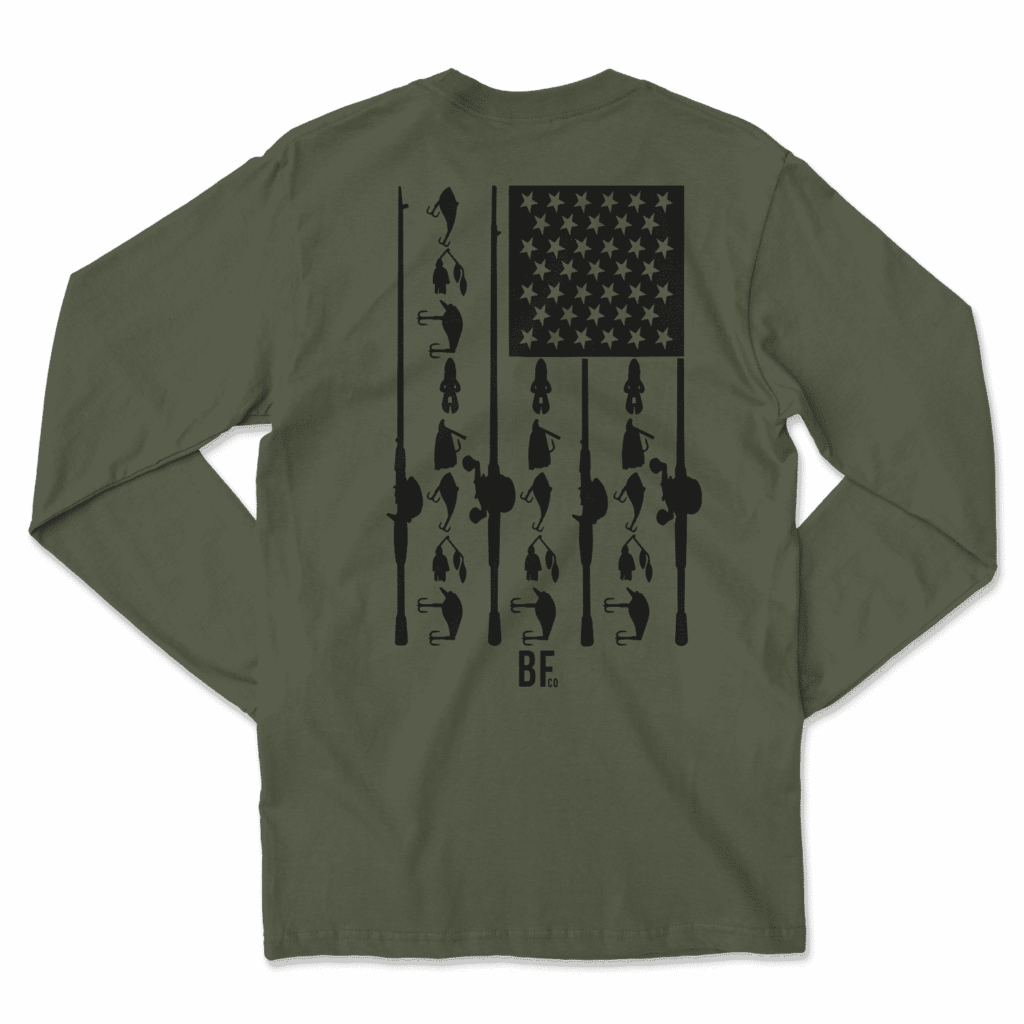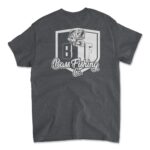Free Shipping over $50+ Order..

Unveiling the Truth: Does a Long Sleeve Shirt Keep You Cooler?
In this article we will come to know does a long-sleeved shirt keeps you cooler. In the scorching heat of summer, the idea of donning long sleeve shirts might seem counterintuitive – after all, we associate comfort with lightweight and short-sleeved attire. However, this popular notion overlooks the fascinating science behind clothing and heat regulation. The answer to the question does a long sleeve shirt keep you cooler? Yes, wearing a long-sleeved shirt in warm weather can help keep you cooler by providing sun protection and reducing direct exposure to the sun’s heat. It can also wick away sweat, aiding in temperature regulation.
In this article, we delve into the intriguing world of long sleeve shirts and their potential to keep us cooler than we might expect. Prepare to challenge the status quo and discover how these garments can actually be a smart choice for staying comfortable and sun-safe in the heat.
How Long-Sleeve Shirts Work?
Long sleeve shirts can actually play a significant role in keeping you cooler in warm weather, provided they are made from the right fabrics and designed with heat management in mind. Here’s how they work:
Breathable Fabrics: Long-sleeve shirts crafted from lightweight, breathable fabrics like cotton, and linen, and moisture-wicking synthetics allow air to circulate freely. These materials wick away moisture (sweat) from your skin and onto the fabric’s surface, where it can evaporate more effectively, providing a cooling effect.
Sun Protection: Long sleeves provide a physical barrier between your skin and the sun’s direct rays, preventing sunburn and minimizing heat absorption. Look for fabrics with a high Ultraviolet Protection Factor (UPF) rating for enhanced sun protection.
Trapped Air: The microclimate created between your skin and the shirt can work to your advantage. As your body heats up, a small layer of warm air gets trapped between the fabric and your skin. This air acts as a buffer against the external heat, helping you stay cooler.
Darker Colors vs. Lighter Colors: While it’s commonly believed that dark colors absorb more heat, it’s worth noting that dark-colored long-sleeve shirts can actually help prevent sunlight from directly reaching your skin, providing a cooling effect. Light-colored shirts reflect more sunlight but might allow more heat to reach your skin.
Loose Fit: Long sleeve shirts with a slightly loose fit allow for better airflow, aiding in cooling by promoting better ventilation around your body.
Moisture-Wicking Technology: Fabrics with moisture-wicking properties pull sweat away from your skin, allowing it to evaporate more quickly. This not only keeps you dry but also contributes to a cooling sensation.
Roll-Up Sleeves: Some long-sleeve shirts come with roll-up sleeves that can be secured in place, giving you the flexibility to adjust your coverage based on the weather and your comfort level.
Benefits of Wearing Long Sleeves in Summer


Wearing long sleeve shirts in warm weather offers a range of benefits that contribute to your comfort and well-being. Here’s how:
UV Protection and Reduced Sun Exposure: Long sleeve shirts act as a physical barrier, shielding your skin from direct sunlight and the harmful effects of ultraviolet (UV) rays. This helps prevent sunburn and reduces the risk of long-term skin damage, including premature aging and skin cancer.
Sweat Wicking and Moisture Management: Long sleeve shirts made from moisture-wicking fabrics help manage sweat efficiently. These fabrics draw moisture away from your skin to the outer surface of the shirt, where it can evaporate. This process keeps you dry and minimizes the discomfort caused by damp clothing sticking to your skin.
Prevention of Direct Skin Contact with Hot Surfaces: In warm weather, various surfaces like car seats, metal benches, or sand can become extremely hot and uncomfortable to touch. Long sleeve shirts provide an extra layer of protection, preventing direct skin contact with these hot surfaces and reducing the risk of burns or discomfort.
Temperature Regulation: Contrary to popular belief, long sleeve shirts made from breathable and lightweight materials can actually help regulate your body temperature. The fabric creates a microclimate between your skin and the shirt, allowing trapped air to act as insulation against the external heat. This can lead to a cooling effect as the trapped air dissipates heat.
Insect Protection: Long-sleeves provide an added layer of defense against insect bites and outdoor irritants. They minimize exposed skin, reducing the risk of being bitten by mosquitoes, ticks, or other pests.
Less Frequent Sunscreen Application: Wearing a long sleeve shirt reduces the amount of skin that needs to be covered with sunscreen. While sunscreen is essential for exposed areas, wearing a long sleeve shirt can help you use less sunscreen overall.
Versatility: Long-sleeved shirts can be versatile pieces of clothing. When the weather is hot, you can roll up your sleeves for a more relaxed feel. In slightly cooler temperatures, you can roll the sleeves down to provide extra coverage and warmth.
Choosing the Right Fabric
Choosing the right fabric for your long sleeve shirt in warm weather is essential for maintaining comfort and staying cool. Here’s what to consider:
Lightweight and Breathable Materials: Opt for fabrics that are lightweight and have excellent breathability. Natural fibers like cotton, linen, and bamboo are known for their breathability, allowing air to circulate and heat to escape from your body. These fabrics help prevent overheating and excessive sweating.
Moisture-Wicking Technology: Look for moisture-wicking fabrics designed to keep you dry and comfortable. These fabrics are engineered to pull moisture away from your skin and distribute it across the surface of the fabric, where it can evaporate quickly. This helps regulate your body temperature and prevents the discomfort of damp clothing.
Synthetic Performance Fabrics: Performance fabrics like polyester and nylon often incorporate moisture-wicking technology and quick-drying properties. These fabrics are designed to keep you cool and dry during physical activities, making them suitable for outdoor adventures in warm weather.
Mesh and Ventilation Panels: Some long-sleeve shirts feature mesh panels or ventilation zones strategically placed in areas where heat tends to accumulate, such as the underarms or back. These panels enhance airflow and aid in heat dissipation, keeping you cooler.
UPF Protection: Consider fabrics with built-in ultraviolet protection (UPF) to shield your skin from harmful UV rays. UPF-rated fabrics provide an additional layer of defense against sunburn and long-term skin damage.
Avoid Heavy or Tight Weaves: When selecting fabrics, avoid heavy or tight weaves that can trap heat and inhibit breathability. These fabrics can lead to overheating and discomfort in warm weather.
Dispelling Myths
It’s a common misconception that wearing long-sleeve in warm weather will make you feel even hotter. However, the science behind staying cooler in the right clothing tells a different story. Here’s how:
- Sun Protection: Long sleeve shirts provide a physical barrier between your skin and the sun’s intense rays. By covering a larger portion of your body, they offer better protection against harmful UV radiation. This protection helps prevent sunburn, skin damage, and discomfort associated with prolonged sun exposure.
- UV Reflection: Light-colored and tightly woven fabrics reflect more sunlight than they absorb, reducing the amount of heat that reaches your skin. Long-sleeved shirts made from such fabrics can actually reflect a significant portion of the sun’s energy, helping to keep you cooler.
- Sweat Management: Long sleeve shirts made from breathable and moisture-wicking fabrics help manage sweat more effectively. These fabrics pull moisture away from your skin and allow it to evaporate quickly, which helps regulate your body temperature and keeps you drier and more comfortable.
- Air Circulation: Some long sleeve shirts are designed with features like mesh panels, strategic ventilation zones, and loose fits. These design elements promote better air circulation around your body, enhancing cooling and preventing overheating.
- Skin Protection: Long sleeve shirts act as a barrier between your skin and hot surfaces, such as chairs, car seats, or equipment. This prevents direct contact with heat-absorbing surfaces and reduces the risk of burns or discomfort.
- Heat Absorption: Sleeve shirts made from lightweight and breathable fabrics absorb less heat from the environment compared to direct sun exposure on your skin. The right fabric can help dissipate heat instead of trapping it against your body.
- Evaporative Cooling: When sweat evaporates from your skin, it cools you down. Sleeve shirts that effectively manage moisture help facilitate this evaporative cooling process, which contributes to a more comfortable body temperature.
Proper Layering for Cooling
Layering isn’t just for cooler weather – it’s a smart strategy for staying comfortable even in hot conditions. Here’s how you can effectively layer long sleeve shirts for optimal cooling:
- Base Layer with Long-Sleeve Shirts: Long-sleeve shirts can serve as an excellent base layer. Opt for lightweight, moisture-wicking fabrics that can efficiently manage sweat. These shirts will help pull moisture away from your skin and encourage quick evaporation, keeping you dry and comfortable.
- Lightweight Overlayer: Instead of adding bulk with heavy layers, consider adding a lightweight, breathable overlayer. This could be a loose-fitting button-up shirt, a lightweight jacket, or even a vest. This additional layer creates a buffer between your skin and the sun’s direct rays, promoting better airflow and providing a cooling effect.
- Sun Protection: Choose an overlayer that also offers sun protection. Look for fabrics with a high UPF (Ultraviolet Protection Factor) rating to ensure that you’re shielded from harmful UV radiation. This is particularly important if you’re spending extended periods outdoors.
- Ventilation: Seek out overlayers with ventilation features, such as mesh panels, vents, or breathable fabrics. These features encourage air circulation around your body and help dissipate heat, preventing you from feeling overheated.
- Roll-Up Sleeves: Many long-sleeve shirts come with roll-up sleeves and secure tabs. This allows you to adjust the coverage as needed. Roll up the sleeves when it’s particularly warm and roll them down when you want more protection.
- Light Colors: Choose overlayers in light colors, as they reflect more sunlight and absorb less heat compared to darker colors. Light colors help maintain a cooler feel even in direct sunlight.
- Material Matters: Opt for overlayers made from lightweight, breathable, and moisture-wicking materials. Performance fabrics designed for active outdoor activities are often engineered to keep you cool and comfortable.
Tips for Maximum Cooling
Wearing long sleeve shirts in warm weather can actually help you stay cooler and more comfortable if you follow some smart strategies. Here are some tips to ensure maximum cooling while wearing long sleeve shirts:
- Hydration: Proper hydration is essential for regulating body temperature. Drink plenty of water before, during, and after outdoor activities to stay hydrated and maintain a comfortable body temperature. Dehydration can lead to overheating, so keep a water bottle handy.
- Timing: Plan your outdoor activities during the cooler parts of the day. Early morning and late afternoon are generally better times to be outdoors, as temperatures are lower and the sun’s intensity is reduced.
- Shade Breaks: Seek shade whenever possible. Take breaks in shaded areas to give your body a chance to cool down. This can be particularly helpful during the hottest hours of the day when the sun’s rays are strongest.
- Lightweight and Loose Clothing: Choose lightweight, loose-fitting clothing, including your long sleeve shirt. Loose clothing allows air to circulate around your body and helps sweat evaporate, keeping you cooler. Opt for breathable materials that wick moisture away from your skin.
- Wear a Hat: Wearing a wide-brimmed hat or a cap with a neck flap can provide extra protection for your head, face, and neck. It also helps create a shaded area, keeping you cooler and reducing the risk of sunburn.
- Use Sunscreen: Don’t forget to apply sunscreen to exposed areas of skin, even when you’re wearing a long sleeve shirt. This prevents sunburn and reduces the risk of overheating due to sun exposure.
- Manage Intensity: Adjust the intensity of your outdoor activities based on the temperature. Consider taking it easy during the hottest parts of the day and engaging in more strenuous activities during cooler times.
- Cooling Accessories: Consider using cooling accessories like neck coolers or bandanas soaked in water. These items can be worn around your neck or forehead to help lower your body temperature.
- Monitor Your Body: Pay attention to how your body feels. If you start feeling dizzy, lightheaded, or excessively hot, it’s important to take immediate steps to cool down. Find shade, drink water, and rest as needed.
Comparing Long Sleeve vs. Short Sleeve
When it comes to choosing between long sleeve and short sleeve shirts for warm weather, there’s a common misconception that short sleeves are always the cooler choice. However, the reality is more nuanced. Let’s compare the pros and cons of both options and debunk the idea that short sleeves are inherently cooler:
Long Sleeve Shirts
Pros
Sun Protection: Long sleeve shirts offer superior sun protection by covering a larger portion of your skin from harmful UV rays. This protection can prevent sunburn and reduce the risk of skin damage and skin cancer.
Reduced Direct Sun Exposure: Long sleeves provide an extra barrier between your skin and the sun. This can help prevent overheating and reduce the risk of overheated surfaces (like hot seats or sand) coming into direct contact with your skin.
Moisture-Wicking: Many long sleeve shirts are designed with moisture-wicking technology that pulls sweat away from your skin, keeping you dry and comfortable.
Cons
Perceived Heat: The most common misconception about long sleeves is that they’ll make you feel hotter. However, with the right fabric and design, long sleeve shirts can actually keep you cooler by providing a protective barrier from the sun and promoting better moisture management.
Disadvantages of wearing long sleeves in summer can include feeling too warm if the fabric is heavy and not breathable.
Short Sleeve Shirts
Pros
Airflow: Short sleeve shirts allow more air to circulate around your arms, which can create a feeling of immediate coolness.
Quick Cooling: When exposed to a breeze or shade, your bare skin can cool down quickly.
Cons
Limited Sun Protection: Short sleeves offer less sun protection compared to long sleeves. Exposed skin is susceptible to sunburn and other sun-related skin issues.
Direct Sun Exposure: While short sleeves may feel cooler initially, they expose your skin to direct sunlight, which can lead to overheating and potential sunburn.
Sweat Evaporation: Without moisture-wicking technology, sweat can accumulate on your skin, leading to discomfort and even chafing.
Debunking the Myth
It’s important to note that the idea that short sleeves are always cooler is not universally true. The cooling effects of short sleeves are immediate and can create a sense of relief, but the benefits of sun protection, reduced direct sun exposure, and moisture management offered by long-sleeve shirts can lead to more sustained comfort in the long run.
Frequently asked questions about does a sleeve shirt keeps you cooler
Does a long sleeve shirt keep you cooler in warm weather?
Yes, a long sleeve shirt can keep you cooler in warm weather by providing protection from the sun’s direct rays and helping to regulate your body temperature.
Does wearing a shirt keep you cooler?
Wearing a shirt can keep you cooler by protecting your skin from direct sun exposure.
Does wearing more clothes keep you cooler?
Wearing more clothes can keep you cooler if they are lightweight and breathable.
When is it too hot to wear long sleeves?
It may be too hot to wear long sleeves when the temperature is extremely high and there’s no shade.
What fabrics are best for staying cool in long-sleeved shirts?
Lightweight and breathable materials like cotton, linen, and moisture-wicking blends are ideal for maintaining comfort in hot conditions.
Can wearing long sleeve shirts provide sun protection?
Yes, long sleeve shirts can offer effective protection against harmful UV rays, minimizing the risk of sunburn and skin damage.
Why do some people believe short sleeves are cooler in hot weather?
The misconception that short sleeves are always cooler is due to the immediate airflow they provide. However, long-sleeved shirts offer better overall cooling benefits.
Conclusion
In conclusion, the choice between long sleeve and short sleeve shirts in hot weather goes beyond the surface. While the immediate airflow of short sleeves can create a sense of coolness, the benefits of long sleeve shirts for cooling are not to be underestimated. With their ability to provide UV protection, reduce direct sun exposure, and manage moisture, long sleeve shirts offer a comprehensive approach to staying comfortable in the heat. By understanding the science behind these benefits and debunking the myth that long sleeves make you hotter, readers are encouraged to make informed clothing choices that prioritize both comfort and health during their outdoor pursuits. So, whether you’re hiking, gardening, or simply enjoying a sunny day, a well-designed long-sleeve shirt could be your secret weapon for staying cool and protected.













